You must choose the right color of paint for the project. So, now you might wonder if the paint you chose will look the same after drying or will it dry darker?
As a general rule paint except watercolors dries darker than its wet color. However, factors such as light, sheen, paint quality, coverage, and surrounding elements influence how we pursue color as lighter or darker. The best way is to test a paint sample on the painting area.
Light is a major factor that affects how we pursue color regardless of paint drying darker than the wet color. Other elements in the environment also make us think color has dried darker. All of these factors will be discussed below.
Does the paint dry darker or lighter?
As a general rule paint dries darker. The reason is the evaporation of water which gave paint emulsion a milky appearance. This is true for paints such as latex, oil, and enamel paints other than watercolor.
Watercolors are thinned down so much and they dry lighter once the water evaporated. This is because the light is absorbed into the water rather than reflected in the case of watercolors.
To understand these more let’s look into the composition of paint. Here I have chosen acrylic paint which is mostly used by artists or painters.
Composition of acrylic paint
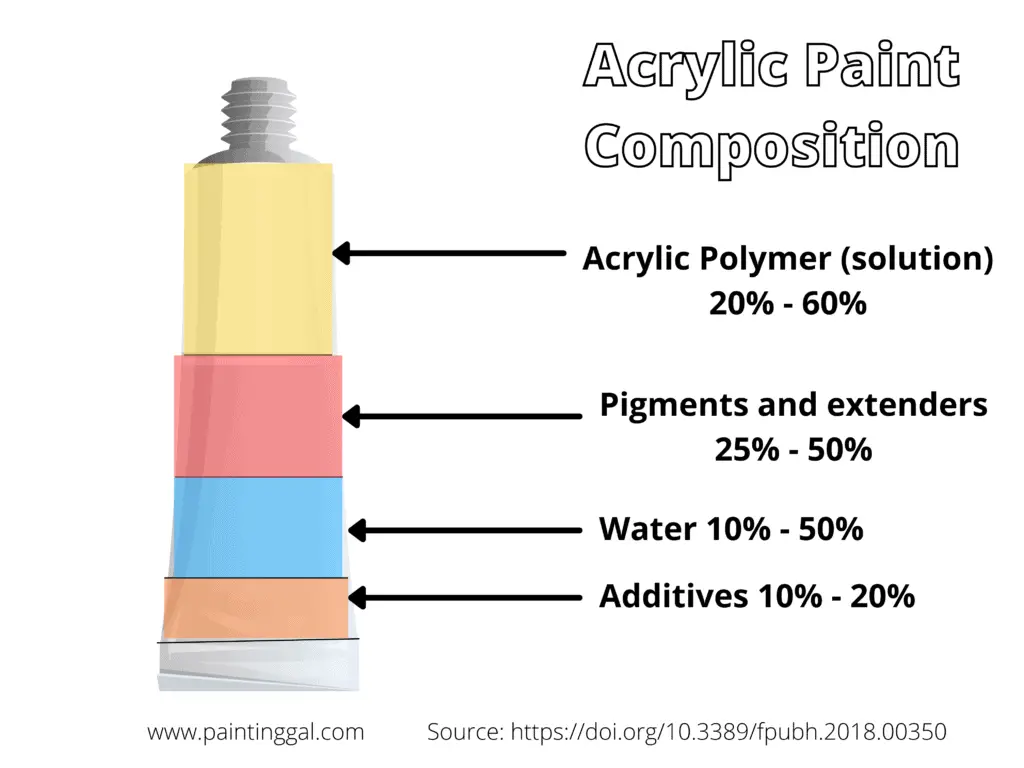
Acrylic paint is made up of acrylic polymer binder, pigment, fillers (maybe), water, and other additives.
- Acrylic polymer binder: Act as the glue that holds the paint together
- Pigment: Give color to acrylic paint
- FIllers: Added by some manufacturers to extend the paint and reduce the cost. Fillers do not provide any value to the artist or painter.
- Water: Act as the vehicle of acrylic paint. It keeps acrylic paint liquid inside the paint tube or the container. Helps smooth paint application.
- Additives: Additives such as dispersing agents, anti-settling agents, and emulsion stabilizers are added to keep the acrylic paint stabilized inside the paint container. Coalescent solvents are added as plasticizers to dry paint into a coherent continuous paint film.
Acrylic paint has an acrylic polymer emulsion that has a milky appearance. It is made by dispersing water droplets in the acrylic polymer binder. When pigments are combined with the milky emulsion, it gets a lighter color, which is not the paint’s true color.
When water from the acrylic polymer emulsion evaporated it dries into a transparent plastic film removing the milky aspect of the paint. This makes acrylic paint dry a darker color than the wet color. This color change is called ‘color shift’.
It relates to any paint except watercolors as they have an emulsion with the paint binder. Latex, oil, acrylic, and enamel paints can have a color shift and dry into a darker color.
Will the paint color change after it dries?
The color of most paints changes when dry unless they are of the highest quality. Paint dry darker than the wet color that you see in the paint container right after applying to a surface. Once the water evaporated, the paint dries darker. It is called a ‘color shift’.
This color shift is not visible in high-quality artist-grade acrylic paint. Because these paints use a clear acrylic polymer binder. This can be true for any paint that is of the highest quality. If your paint has a clear binder, then there will be no or very slight color shift.
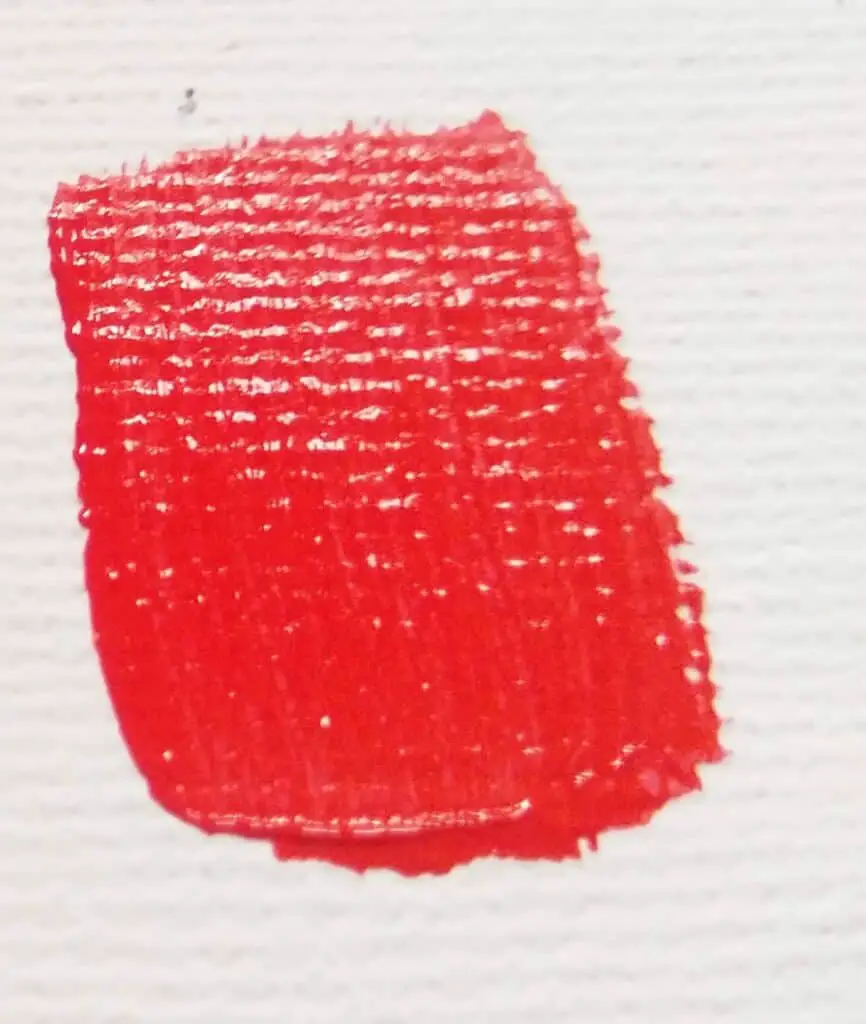

In the above images, you can see the color shift. In general, artist acrylic paints are higher in quality than the house paints like latex paint. Therefore you might see a greater color shift in house paints like latex paint.
Because of this color change from wet to dry paint and the effect of environmental factors on color, manufacturers suggest using paint color samples directly on the surfaces you are going to paint. Here is what Dulux paints said about using paint samples.
For an accurate sample of specific paint color, we recommend purchasing a Dulux Sample Pot and creating some large color swatches using them in your environment to check the color. The Dulux Sample Pot color should be the accurate color. Then you can purchase a larger size can of the same color both colors should be the same.
Dulux Paints
So the best choice would be to use the paint samples of the color given by the manufacturer. You can paint a big color swatch of these samples on the surface you have planned to paint. Let the paint dry and inspect your results. This is the most accurate way to see how the paint looks in that environment after drying.
Does the paint look darker on the wall?
The paint looks darker on the wall after drying than it is wet. This is called the color shift that happens when the water evaporates from the paint film. Depending on your lighting when color is applied to an interior, it can appear up to two shades darker.
Lighting is one of the main factors that can affect the look of paint after drying. If the painting area has poor lighting, the color will be darker. If your painting area has got a good amount of natural lighting, the color will look lighter. However, the source of your light will also affect how the color looks.
Does wet paint look darker?
The paint you receive when you purchase a can of paint is wet. Wet paint does not look darker but lighter than the paint color after drying except for watercolors. The reason for lightness is the emulsion of paint binder and water which has a milky appearance. Once the paint is dry there will be no water and an emulsion. Therefore you will see as the paint dries darker than wet paint.
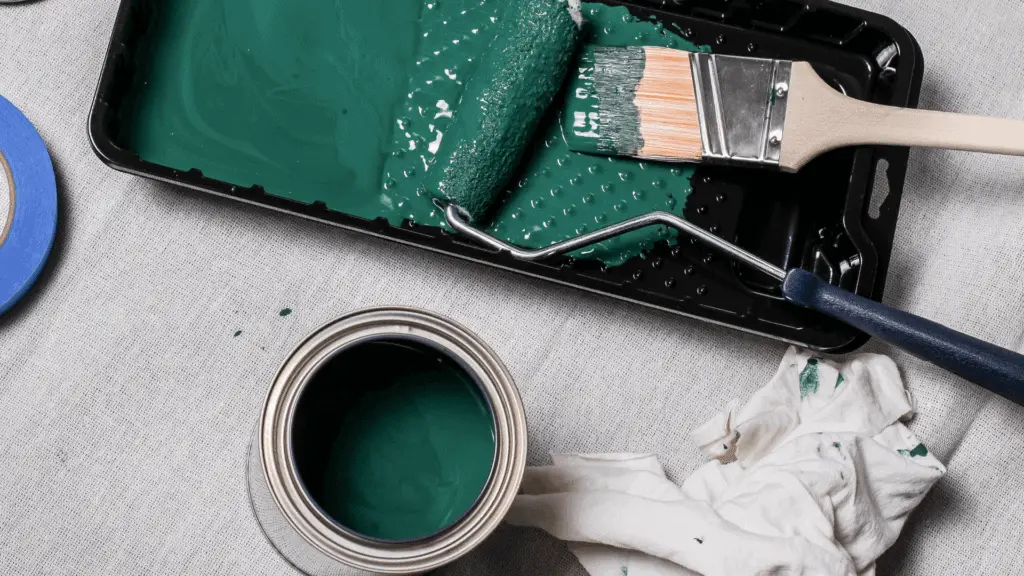
Wet paint in general looks different to dry paint. Once a coat of paint completely dries the color that you end up with on your wall is the true color. Make sure the color is mixed properly to obtain the true color. The true color of the paint will appear once the wet paint coating has completely dried.
How much time for the paint to dry?
Now that you know paint dries darker, you might wonder what is drying the time of the paint.
It will take around 8 hours for the paint to dry and show its true colors. This can change depending on the humidity, temperature, and airflow of the painting environment.
Ideally, it is best to paint on low humid hot days and never on high humid rainy days. High humidity can retard the drying process. It is best to paint at temperatures between 68ºF (20ºC) to 77ºF (25ºC) and 50% to 75% relative humidity. This will allow the paint to dry and harden properly.
If you are interested to know how long it will take for paint to cure and harden, you can refer to my article; How long for acrylic paint to cure? (Comprehensive answer).
Does the second coat of paint make it darker?
In general, applying a second coat of paint does not make it darker. In most cases, it is necessary to apply a second coat of paint for the full coverage. Coverage help paints to reveal they’re true colors as they are not affected by the paint layer underneath.
Also applying several coats of paint intensify the paint color and give an even finishing. You can minimize the number of paint coats needed by priming and prepping the surface well. Usually, if you paint on top of an old color, it may take several coats of paint to cover. This may take only one coat of paint if you are using high-quality paint.
Will the paint match the color swatch?
Matching paint to a printed color swatch properly is not possible because the ink colors are not the same as paint colors. It is not possible to accurately copy a paint color onto a printout such as in a color chart. Besides, there will be environmental factors that affect how the paint looks.
When we can’t decide on what color to use for our project, we can ask the paint retailer for a color fan deck. It is a printed stack of color stripes that has color combinations the manufacturers offer. However, as the color fan deck has printed colors, you will not get a paint color that 100% matches the paint color.
The best option is after choosing a color from the color fan deck and take a sample paint of that color. Then paint a large swatch of the paint sample on the surface you want. Let it dry for 8 hours and check the results. This way you can see what to expect from your paint.
What factors can change how the paint colors look?
Now that we know paint color changes, let’s see what factors can influence how a color looks, or how we pursue a color. These factors are the sheen of the paint, light, coverage, and surrounding elements used. Let’s discuss each of these in detail.
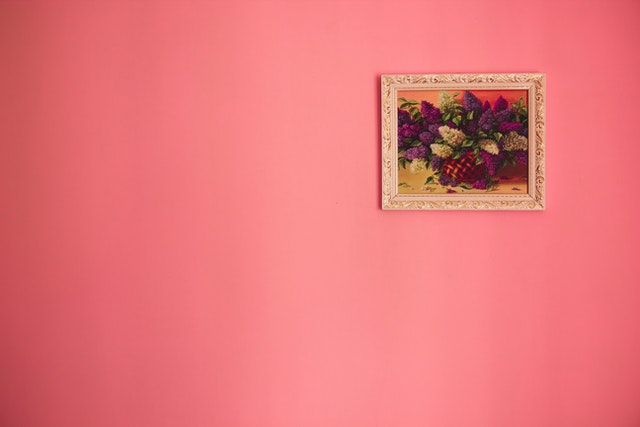
Lighting
Light is the biggest factor when it comes to how light or dark a color will look. When you change the type of lighting in the area, it will also change the color. Depending on your lighting when color is applied to an interior, it can appear up to two shades darker.
Generally, if a home has not got a lot of high trees and has a good natural lighting color will look lighter. If the inside of your house has few windows and has predominantly a cool natural light, it will look darker.
It is harder to see the true color at a paint store. This is because how a color looks can change according to the intensity of the light. If you choose the color in an environment that has different intensity of light than your home, then the look of the color will change once you applied it at home.
Sunlight, daylight, halogen light, fluorescent light, and incandescent light affect colors differently. As mentioned before the best way is to take the paint sample of the color you have chosen and apply a large paint swatch to the place you want it.
Alternatively, you can apply the sample paint color onto a foam core board and view it in different places of the surface you are planning to paint. It is important to place the foam board directly on the surface you are going to paint. Because different angles to the light source can cause color changes
Then look at the color swatch several times during the day. Also, check how the color looks under different kinds of artificial lights before painting and taking the final decision about color.
Sheen
Sheen is another factor that can affect how a color looks. You can get paint in different sheens such as matte or flat, gloss, semi-gloss, high gloss, satin or eggshell, etc. As the sheen of paint increases, it increases the hardness and durability of the paint.
Gloss finishing has a look of darker rich color. This is because light reflects from the gloss surface and also absorbs into the paint at the same time. A paint color looks dark when more light is absorbed by a material. If the light is not absorbed you will see lighter colors more towards white.
Matte or flat finishing paints has a lighter color compared to other colors with a high sheen. This is because matte finishings do not reflect light.
Other than color, matte or flat paints hide surface imperfections, however, they are harder to clean and can get dirty easily and quickly. Matte paints tend to absorb moisture and allow dirt to stick to the paint.
However, the higher the gloss is it will resist dirt and moisture. Also cleaning is easier with gloss finishes. However as gloss finishes reflect light, the surface imperfections are harder to hide.
Coverage
Coverage can also change the paint color. When there is no full coverage, the paint can be seen through and show the color underneath. So the top paint color will not have the true color intensity and will change from the true color. It is always a best practice to apply paint to achieve full coverage.
Obtaining full coverage is easier with high-grade paint than with low-grade paint. High-grade paints will cover well with just one coat. It has a high pigment load.
However, with low-grade paint, you will need a few coats to achieve full coverage. They have a low pigment load. Also, low-grade paints are cheaper while high-grade paints are expensive due to their high quality.
Low-grade paints are used in commercial spaces such as offices and apartments where frequent repainting is done to maintain standards. Medium grade paints are good where repainting is done, every few years such as in children’s rooms. High-grade paints are good for places where the frequent painting is not done.
Surrounding elements
We look at things relative to our environment. This is the same with paint. We look at colors relative to other colors in the area, and other materials in the area. Say you are painting your home. If you are setting up a darker color among light colors it will look darker to you and vice versa.
You will see a color lighter or darker depending on the other elements present in the area such as wallpapers, paintings, furniture, etc. Therefore keep this in mind when you are choosing a color. This is why it is recommended to test a paint sample at the place you are going to use paint.
Does paint darken over time? and color fading
The paint does not darken over time. But paint can be faded especially if exposed to sunlight for a long period. In fading colors can be lightened. The only scenario paint darken is when drying from wet to dry paints.
Color fading usually occurs in exterior paint, if the quality is not good. Interior paint of low quality can fade over time if exposed to more sunlight. Other than this paint can be darkened by exposure to dirt and dust. You need to keep an eye on dirt on your painted surface.
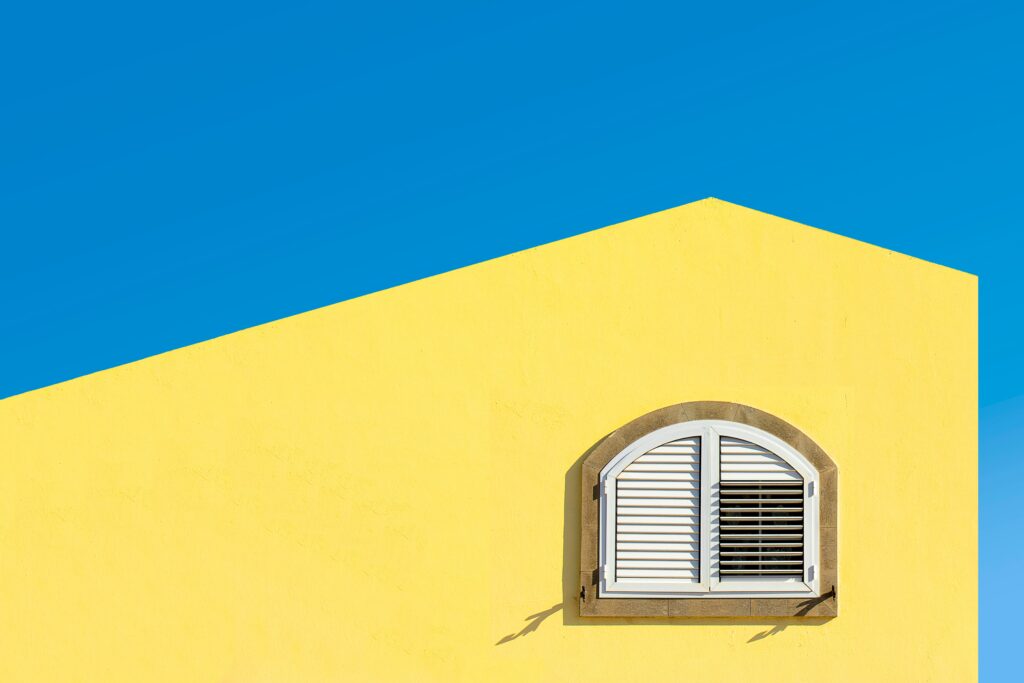
Conclusion
The paint dries darker than its wet color. This is because of the water evaporation from paint. The water and paint binder were in an emulsion that has a milky appearance. It makes colors look lighter. After evaporating water, there is no emulsion and the color will be darkened. Always give the paint around 8 hours to fully dry and show its true color.
Other than the color shift from light to dark, some factors influence how we see color. One of the major factors is light. Because of this paint manufacturers recommend buying a small pot of sample color and painting a large swatch on the surface you are going to paint. this way you can accurately decide on what colors to choose.

